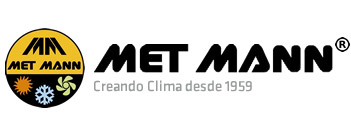Today we are going to explain how the heat output of an industrial hot air generator should be calculated, as well as some aspects to take into account when selecting the ideal equipment.
- Room volume
First of all we are going to define the minimum power of the industrial hot air heater, in order to determine this value, the volume of the industrial building to be heated must be calculated.
For example, if we have a 600m2 warehouse and 5m high, the volume to be heated will be 3,000 m3.

-
Thermal differential
Once the volume of the industrial building has been determined, we must consider the minimum comfort temperature which, according to regulations and depending on the activity, must be between 14°C and 17°C, considering a minimum outside temperature of 0ºC and a target of 14°C, a thermal jump of 14°C is required.

- Type of insulation of the premises
Finally, we must determine the type of insulation of the industrial building based on the following criteria:
-
- K = 1.5 The premises are VERY WELL insulated. Walls or blocks insulated with fiberglass panels. Cover or insulated false ceiling.
- K = 2.0 The room is WELL insulated. Uninsulated brick or block walls. Cover or insulated false ceiling.
- K = 2.5 The room is NORMALLY insulated. Uninsulated brick or block walls. Non-insulated cover.
- K = 3.5 The room is NOT isolated. Board or fiber cement roofs. non-insulated cover

-
Final calculation
With all the data defined, the industrial air conditioning calculation formula is:
Volume x Thermal head x Insulation = Required heat output in kcal/h
3000 m3 x 14°C x 2.5 (type of insulation) = 105,000 kcal/h which divided by 860 kcal/h = 1 kW corresponds to 122 kW/h

Other aspects to take into account:
- Check that the type of industrial hot air generator to be installed is the most appropriate.
- Determine if the user wants to set the whole installation or part of it.
- Check if there are free sources of heat (compressors, ovens, lights, etc.).
- Class of work activity (according to the activity, the comfort temperature is variable).
- Location of the premises (an isolated warehouse is not the same as a semi-detached one).
- If the activity of the company leads to constant door openings, the heat generated by the industrial hot air heater will dissipate, increasing its consumption (to solve this problem it is advisable to place hot air curtains.
- If the premises are for product storage, part of the volume will be occupied, so in principle a lower industrial hot air heater can be installed (this solution is valid for materials that are not good heat conductors).
- Check that the premises do not have extractors in operation, in the winter phase (if there are extractors, take note of the extracted air flow and select an industrial hot air generator with sufficient flow to compensate for the air extraction).
- Determine the position of the fuel tank (if its location is far from the equipment or at a lower level, a pressure group must be installed).
- When the warehouse to be air-conditioned has a considerable height (+4m), it is advisable to install heat recovery destratifying fans on the ceiling, for example, the MET MANN DVW140 model, in order to recover the hot air stratified on the ceiling, thus achieving significant energy savings (approximately 30%).
- Install the hot air generator strategically, in order to cover the maximum surface area (do not obstruct the air sucked and blown by the equipment).
- If the installation is carried out through a duct network, design it with the lowest possible pressure drop and with an optimal selection of grilles (air speed in the duct 12 m/s air speed in the grills 5 m/s)
There may be other special variables but under normal conditions, by performing this type of calculation we can refine the thermal need for heating any type of industrial, commercial or agricultural premises with hardly any variations.


